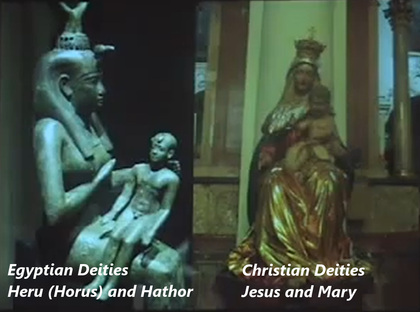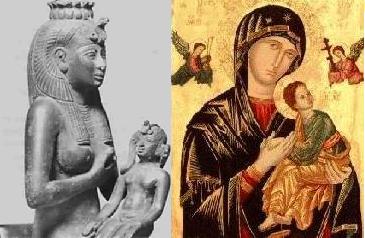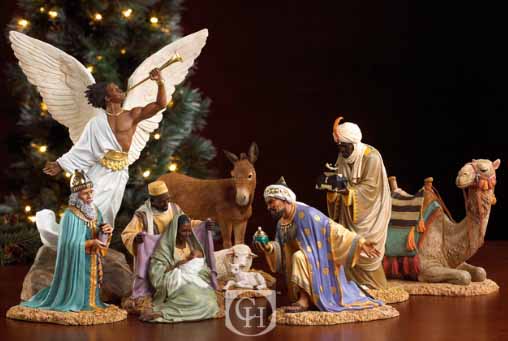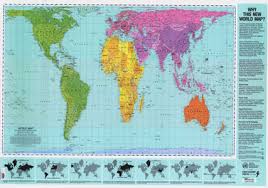| MERRY AFRICAN CHRISTMAS! LOVE AND PEACE TO YOU, YOUR LOVED ONES, AND TO THE WORLD Every culture on earth has their own sacred stories and sacred texts which tell the story of their people, the story of their fears, their hopes, their beliefs, their God, their philosophy, their morality, their lessons, and their wisdom. . The sacred stories and the sacred texts tell the story of a people, of their Creator, of the Creation, and they give the people guidance for living a good and happy life here and in the hereafter. . The Annunciation, Conception, Birth, and Adoration of the Child, 1538-1501 B.C. We shall find that the gospel history was 'written before' from beginning to end. The story of the divine annunciation, the miraculous conception (or incarnation), the birth, and the adoration of the messianic child, had already been engraved in hieroglyphics and represented in four consecutive scenes upon the innermost walls of the holy of holies in the temple of Luxor which was built by Amenhept III, a pharaoh of the eighteenth dynasty. In these the maiden queen Mut-em-Ua, the mother of Amenhept, her future child, impersonates the virgin mother who bore without the fatherhood, the mother as the solar boat, the mother of the Only One. . The first scene on the left hand shows the god Taht, the lunar Mercury, the divine word or logos, in the act of hailing the virgin queen, announcing to her that she is to give birth to the coming son. In the next scene the god Kneph (in conjunction with Hathor) gives life to her. This is the Holy Ghost or Spirit that causes conception Kneph, being the spirit. Impregnation and conception are made apparent in the virgin's fuller form. Next the mother is seated on the midwife's stool, and the child is supported in the hands of one of the nurses. The fourth scene is that of the adoration. Here the child is enthroned, receiving homage from the gods and gifts from men. Behind the deity Kneph, on the right three men are kneeling and offering gifts with the right hand and life with the left. The child thus announced, incarnated, born, and worshipped was the pharaonic representative of the Aten sun, the Adon of Syria, and Hebrew Adonai, the child-Christ of the Aten cult, the miraculous conception of the ever-virgin mother personated by Mut-em-Ua . Don't let fear of (hell), inquisition, excommunication or ostracism, prevent you from doing sankofa, meaning going back and fetching what you have left behind. Go back and learn or re-learn the ancient sacred stories, texts, and wisdom of your African ancestors, and see how easily they reconcile with what you already know and believe. . "Se wo were fi na wosankofa a yenkyi" : It is not wrong to go back for that which you have forgotten, Akan proverb, Ghana - Above: the Sankofa bird, turning its head backwards and taking an egg off its back . Left and center: the ankh. It means "key of life", and it was held by Kings and Queens in Ancient Egypt. It represents life, health, strength, happiness and family, with the woman (loop), the man (vertical line), and the child issued from their union (line across). The Christian cross was modeled after it - Right: Ashanti doll, symbol of life and fertility . Left: an Osiris Pillar of Senusret I of the 12th Dynasty. Right: the coffin of Ahmose Nefertari (18th Dynasty), holding on to dear life . Click and explore the African sacred stories below: .  The Pyramid Texts The Pyramid Texts
Samuel A. B. Mercer, translator [1952].
The oldest sacred text in the world that we know of, dating back to 3100 B.C.E.
 The Egyptian Book of the Dead The Egyptian Book of the Dead
E. A. Wallis Budge, translator [1895].
The best known Ancient Egyptian sacred text, which describes the journey into the afterlife.  The Kebra Nagast The Kebra Nagast
translated by E. A. Wallis Budge [1922]
The legendary history of Ethiopia.
 Stolen Legacy Stolen Legacy
by George G.M. James [1954]
Did the Greeks steal classical philosophy from an Ancient Egyptian mystery tradition?  The Negro The Negro
by W.E.B. Du Bois [1915]
A great introduction to Black history by a noted African-American activist and scholar. . . . By Thomas Blackshear Happy Holy-days! Merry African Christmas! Sylvie | 



 ....
.... 





No comments:
Post a Comment